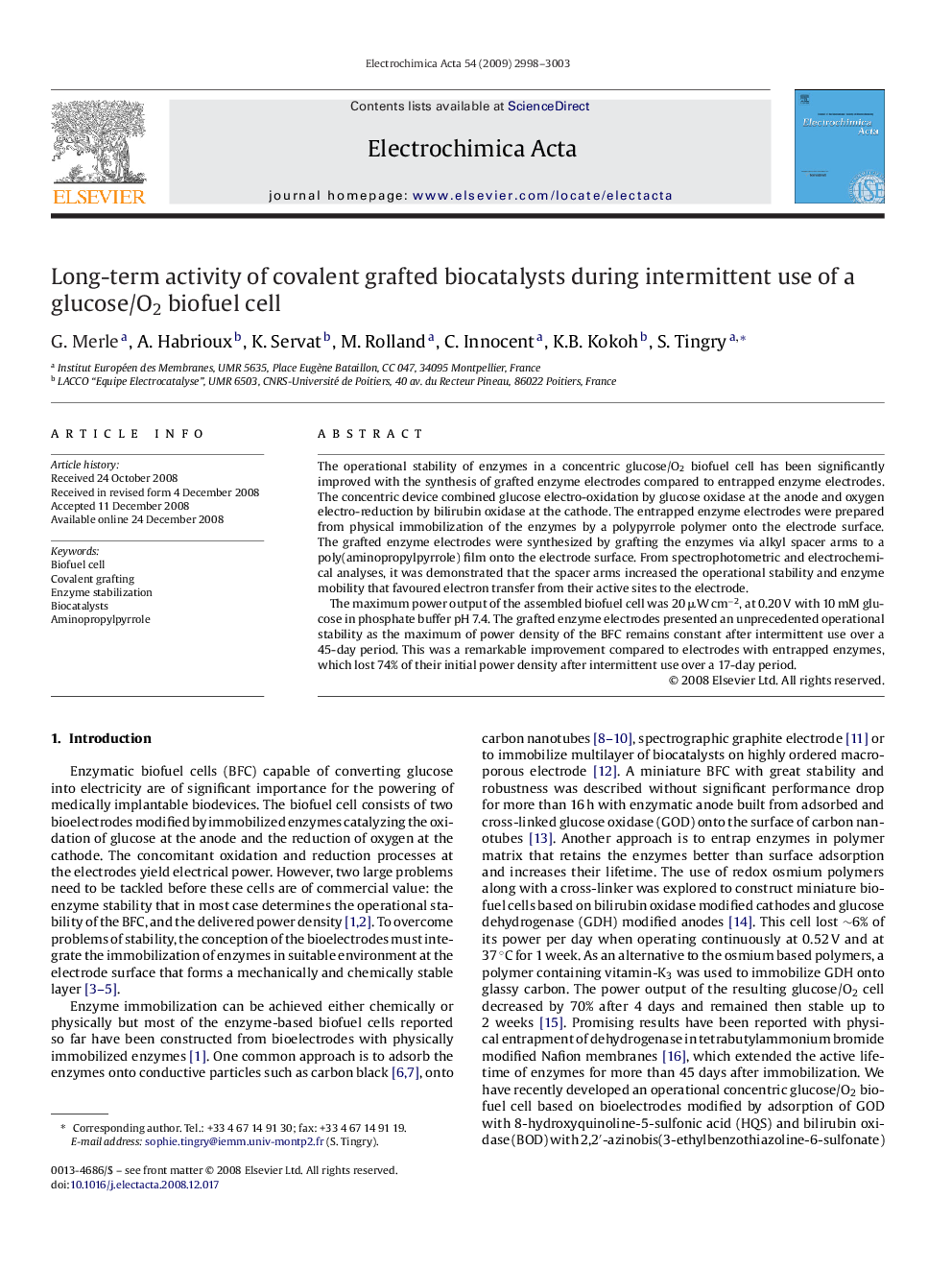| کد مقاله | کد نشریه | سال انتشار | مقاله انگلیسی | نسخه تمام متن |
|---|---|---|---|---|
| 193277 | 459765 | 2009 | 6 صفحه PDF | دانلود رایگان |

The operational stability of enzymes in a concentric glucose/O2 biofuel cell has been significantly improved with the synthesis of grafted enzyme electrodes compared to entrapped enzyme electrodes. The concentric device combined glucose electro-oxidation by glucose oxidase at the anode and oxygen electro-reduction by bilirubin oxidase at the cathode. The entrapped enzyme electrodes were prepared from physical immobilization of the enzymes by a polypyrrole polymer onto the electrode surface. The grafted enzyme electrodes were synthesized by grafting the enzymes via alkyl spacer arms to a poly(aminopropylpyrrole) film onto the electrode surface. From spectrophotometric and electrochemical analyses, it was demonstrated that the spacer arms increased the operational stability and enzyme mobility that favoured electron transfer from their active sites to the electrode.The maximum power output of the assembled biofuel cell was 20 μW cm−2, at 0.20 V with 10 mM glucose in phosphate buffer pH 7.4. The grafted enzyme electrodes presented an unprecedented operational stability as the maximum of power density of the BFC remains constant after intermittent use over a 45-day period. This was a remarkable improvement compared to electrodes with entrapped enzymes, which lost 74% of their initial power density after intermittent use over a 17-day period.
Journal: Electrochimica Acta - Volume 54, Issue 11, 15 April 2009, Pages 2998–3003